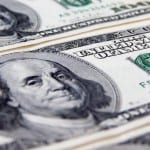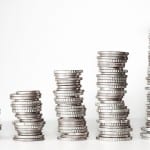Oracle Corporation Raises Dividend Payout Eight Consecutive Years, Averages 18% Annual Growth Rate (ORCL)
By: Ned Piplovic,

The Oracle Corporation (NYSE:ORCL) has been paying dividends since 2009 and has boosted its annual dividend every year since 2010 while maintaining an average growth rate of more than 18% per year.
The company’s 1.65% current dividend yield is lower than average yields in some other market sectors. However, Oracle’s current yield exceeds the average yield of the company’s peers in the Technology sector. Oracle’s share price became another casualty of the overall market volatility in February and March 2018 and is currently trading just a fraction above its price from 12 months earlier. However, at the beginning of March 2018, the share price traded nearly 20% above its April 2017 levels.
Investors looking for a battered equity with a potential for strong asset appreciation as its share price recovers from the recent decline should consider the Oracle Corporation as a viable candidate. However, interested investors should conduct all their due diligence quickly as the company’s April 16, 2018, ex-dividend date approaches rapidly, and the company’s pay date occurs just two weeks later, on May 1, 2018.

Oracle Corporation (NYSE:ORCL)
Headquartered in Redwood City, California, and founded in 1977, the Oracle Corporation develops, manufactures, markets, sells, hosts and supports application, platform and infrastructure technologies for information technology (IT) environments. The company provides Software as a Service, Platform as a Service and Infrastructure as a Service layers for cloud technology applications. Additionally, the company offers licensing of its Oracle Database software, which enables storage, retrieval and manipulation of data. Another product offering is the Oracle Fusion Middleware software used to build, deploy, secure, access and integrate business applications, as well as automate business processes. Also, Oracle provides software for mobile computing, the Java software development language and big data analytics solutions. Oracle’s portfolio of products also includes software solutions to manage human capital, enterprise resource planning, customer experience, procurement, supply chain, business analytics, corporate finances, risk and compliance.
The Oracle Corporation’s current quarterly dividend payout of $0.19 is equivalent to a $0.76 annualized distribution for 2018 and a 1.7% forward dividend yield. This dividend yield is approximately 20% higher than Oracle’s own average yield of 1.4% over the last five years. While the 1.7% current yield is not as high as average yields in other sectors, Oracle’s current yield is 31% higher than the 1.3% average yield of the entire Technology sector. The 0.71% average yield of all the companies in the Application Software market segment is even lower than the Technology sector’s average yield. Therefore, Oracle Corporation’s current yield outperforms the Application Software segment’s average yield by 133%. Even after stripping out the companies that do not offer dividend distributions to their shareholders, Oracle’s 1.7% yield is still 3.4% higher than the 1.6% average yield of only dividend-paying companies in the market segment.
While Oracle’s history of dividend distributions only goes back to 2009, the company failed to raise its annual dividend only in 2010 and has boosted its annual dividend payout every year since. Over the past eight years, the company has augmented its total annual dividend nearly four-fold by compounding the annual payout at an average rate of 18.2% per year.
After starting its trailing 12-month period from its 52-week low of $44.00, the company’s share price rose nearly 20% with minimal volatility by September 12, 2017. After the relatively smooth and steady rise over the first five months, the share price lost half of its gains in just one week and embarked on a six-month period of considerable volatility. However, despite the volatility and several market selloffs, the share price climbed to its 52-week high of $52.97 by March 9, 2018. Unfortunately, the most recent overall market decline — which particularly hit the Technology sector — completely erased all the share price’s gains for the year. The share price started to recover and closed on April 5, 2018, at $45.96, which was still more than 13% below the 52-week high from early March 2018 but 4% above its level from the bottom of the most recent drop on March 23, 2018.
Despite the marked decline and volatility, the company’s share price growth and rising dividend income managed to keep the shareholders in the green with a 3.8% total return over the past 12 months. Over the past three years, the total return was 11.5%, and it was nearly 50% over the past five years.
Dividend increases and dividend decreases, new dividend announcements, dividend suspensions and other dividend changes occur daily. To make sure you don’t miss any important announcements, sign up for our E-mail Alerts. Let us do the hard work of gathering the data and sending the relevant information directly to your inbox.
In addition to E-mail Alerts, you will have access to our powerful dividend research tools. Take a quick video tour of the tools suite.








 Connect with Ned Piplovic
Connect with Ned Piplovic
